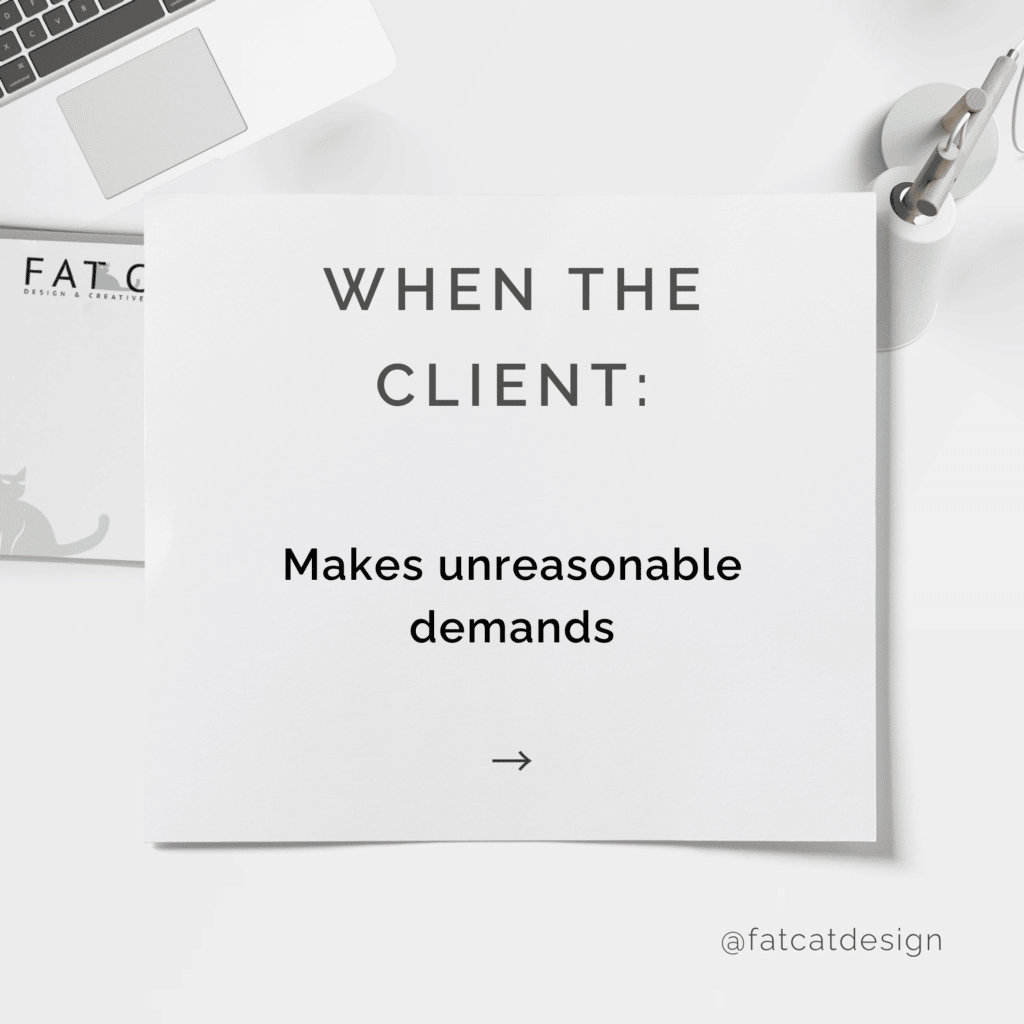Three-Part Series on Managing Toxic Clients
1: Knowing when to walk away from a toxic client
2: How to walk away from a toxic client – the right way
3: How to prevent a toxic client relationship
Part 1
How to identify a toxic client and define when it’s time to walk away
This article will explain:
How to identify a toxic client, and
The barometer for canceling your association with a noxious or destructive customer.
Cutting the cord from toxic clients
Have you encountered a customer who:
Is unprofessional, abusive, or disruptive? Makes unreasonable demands? Refuses to take part in your project process and blames you – the provider – for failures? Disrespects your qualifications or expertise? Disregards your feedback?
These are toxic clients, and sometimes it’s necessary to cut the cord.
Here’s how to identify a toxic client, and know when to walk away.
What is a toxic client or abusive customer?
A toxic client or customer may:
Communicate in an unprofessional or disruptive manner
Verbally abuse you with derogatory or foul language
Make unreasonable demands
Refuse to take part in the project process, and blame you – the provider – for setbacks
Command deliverables that are outside of the project scope or contract
Disrespect or disregard your qualifications or expertise
Reject your qualified feedback without dialog
What is a toxic client?
Toxic clients are abusive and disrespectful and can drastically drain your time, finances, and energy
Any professional organization may face the challenge of severing ties with a destructive or hostile customer. These clients drain your professional, fiscal, or energy resources, and threaten the viability of a project or your business.
Contentious, belligerent, harmful, and destructive customers exist, and you may have encountered them. These clients or individuals may not initially exhibit warning signs. But their behavior may morph into abusive or unmanageable, with disparaging language, faulty accusations, or unreasonable demands.
Not all toxic clients are toxic people all the time
Some toxic clients may initially present as drama-free.
Yet as work with them progresses, you may encounter unreasonable demands, unmanageable behavior, disparaging accusations, abusive language, or other malignant conduct.
Unequivocally, there are times and circumstances for severing the professional relationship.
So when should you sever ties and cut the cord?
Sometimes retaining a toxic client is not worth the emotional, fiscal, or resource costs.
The internal struggle of walking away from a client or project
It’s never easy for honorable providers to walk away from a project.
There is an internal struggle. You may feel as if you’re quitting, or that you’re responsible for any business or project failures.
- Is this the only solution?
- Is this “quitting”?
- Does it mean my business or this project is a failure?
- How does this speak to my services?
Yet, sometimes walking away is the best solution – from an emotional, fiscal, and resource perspective. As a valued Fat Cat Design client once reflected:
Sometimes hanging onto a toxic client is not worth the emotional cost.
Wrapping Up
When a client exhibits toxic, abusive, or disrespectful behavior, your only solution may be to walk away to preserve your integrity, business, and emotional well-being. Taking this necessary step is not giving up, quitting, or throwing in the towel. On the contrary, it’s an act of strength, professionalism, and self-preservation.
Resolve marketing headaches
Promote your business. Connect with customers.
Fat Cat Design specializes in website design, social media, marketing, and graphic design.
We help businesses excel, achieve marketing goals, and succeed.
Contact Fat Cat Design to strategize about your business and services.
Get Started







